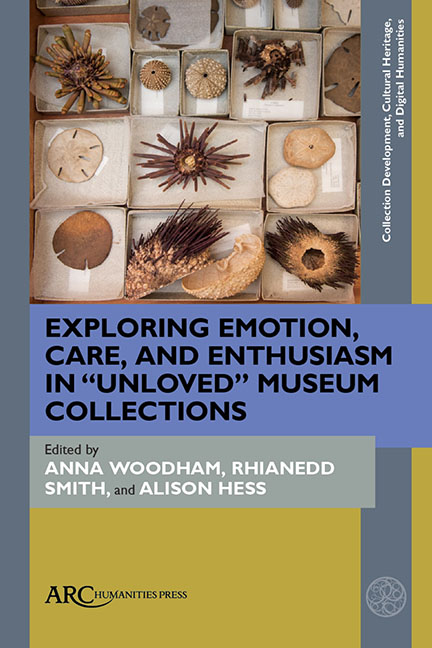Chapter 3 - What’s in a Name? The Ethics of Care and an “Unloved” Collection
Published online by Cambridge University Press: 20 November 2020
Summary
Introduction
I think the greatest challenge is getting the National Slag Collection … used […] if by the time I die, nobody still uses it, then I do wonder, well, what was the point? That would be my deepest regret.
Not all museum objects are created equally, and we live in a world where judgements about the value of a museum object can be made in a split second, often grounded in how it looks. Some museum objects will become iconic star items and others will not, regardless of what value and significance they have or represent. This is certainly true of the National Slag Collection (NSC), which forms the focus of this chapter. The NSC is a stored research collection of hundreds of specimens of industrial slag that contributes to our understanding of historic metalworking processes from the Iron Age to the modern day. The collection is owned by the Ironbridge Gorge Museum Trust (IGMT), based at the Ironbridge Gorge World Heritage Site (Shropshire, UK) and co-managed by the Historical Metallurgy Society (HMS), a model of shared collections management that we will return to later in this chapter.
The NSC's public image is compounded by a variety of factors. Slag is a waste product from the smelting of metal ore. It consists of chemical deposits from a process that helped to shape the modern world and is often found spread across postindustrial landscapes. Slag is hard to categorize. It sits in between the human and the natural. It is human made but not human fashioned, a product of chemistry and experimentation rather than worked on and “crafted,” as some of the other collections mentioned in this volume are. Formed as part of an industrial process, slag is hard for many to relate to, and people possibly also find it hard to understand its value. As a stored collection (see figures 3.1 and 3.2), the NSC is unlikely to rank highly on the list of “must-see” objects in any behind-the-scenes tour (unless it is for its novelty value).
- Type
- Chapter
- Information
- Publisher: Amsterdam University PressPrint publication year: 2020



